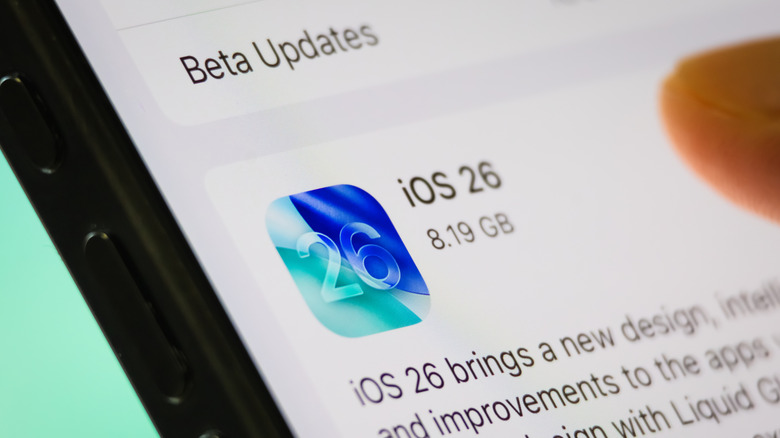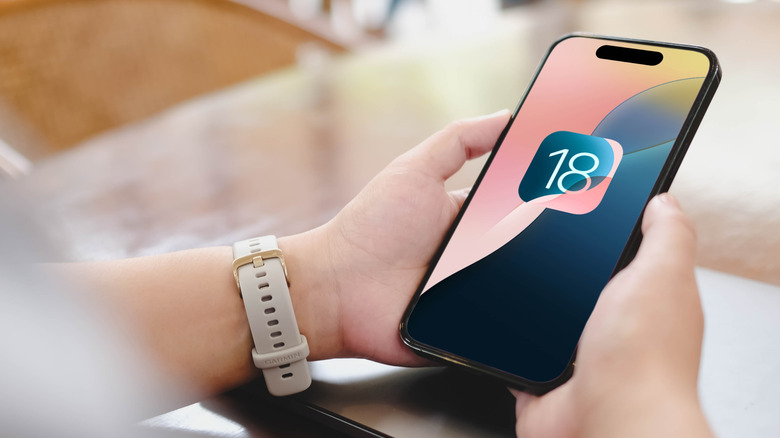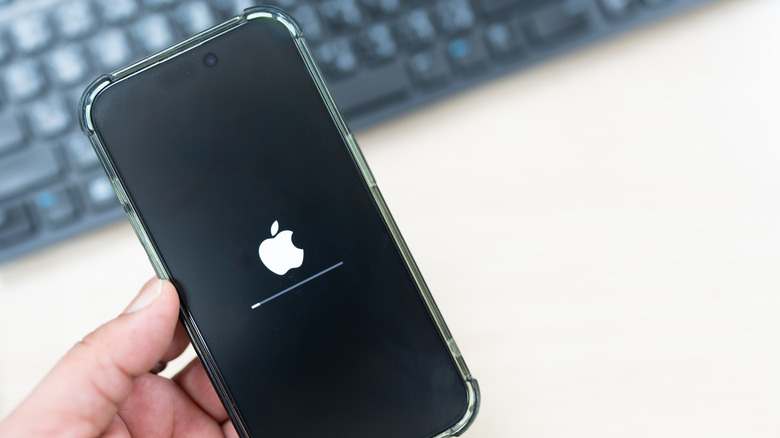Not A Fan Of iOS 26? You Can Uninstall It — But It's Not Exactly Easy
Apple's iOS 26 has only been out of beta and publicly available for a little over a week now, but it's already dividing iPhone owners. The massive update introduced a controversial new interface called "Liquid Glass" that was paired with bouncier, flashier animations and more Apple Intelligence across the board. While the refresh certainly has its fans, plenty of others were almost immediately tired of iOS 26's new look; not to mention its bugs and its battery drain. If you're not a fan, can you uninstall iOS 26 and go back to the halcyon days of iOS 18?
Technically, yes. That said, the process is complex, risky, and only possible for a short window of time. Downgrading iOS isn't something Apple makes easy: Apple only "signs" older versions of its software for a week or two after releasing a new one, meaning users can only revert while the digital window is still open. Once that signature is removed, installing an older iOS build is all but impossible.
Going back to iOS 18 puts your data at risk
Even during the short window when downgrading from the new iOS to the old one is technically allowed, the move is not without its fair share of difficulty and risk. Apple makes it so tough for a reason: Adopting the new iOS (and making it tough to revert to the old one) is supposed to protect your device's security and prevent you from using weak software that could expose your personal data.
Security isn't the only thing threatening your data, either. Going back to an old iOS version means you'll have to wipe your device, and there's no guarantee that all your data will be restored. That means apps, messages, and personal files could all be lost in the process unless they're synced to iCloud or another cloud service. Plus, backups made on iOS 26 won't transfer cleanly to iOS 18, so if you skipped that step before resetting your iPhone, you might have to start from scratch if you want to go back.
Don't attempt to revert your iOS unless you know what you're doing
The downgrade process itself isn't anywhere near as user-friendly as upgrading. It requires downloading the former iOS 18 firmware file (called an IPSW) for your iPhone model, using a computer to place the phone in recovery mode, and then forcing a restore. The steps will vary depending on your iPhone version, and it can be pretty intimidating for those who aren't tech-savvy. What's more, if Apple stops signing the version mid-process, you'll get stuck mid-update and be forced to reinstall iOS 26 anyway.
Some third-party software companies advertise easier downgrade tools, but be careful: these methods still involve wiping the device, and can also introduce their own risks. For most people, it's best not to try and go back. Each new iOS update is designed not only to add features, but also to patch vulnerabilities, so rolling back to an earlier version may leave your devices more exposed to security threats.
Even if you succeed, you'll lose any data created since upgrading. Messages, photos, and app progress may vanish unless they're backed up outside the device. For many of us, that's too high a cost compared to tolerating the differences between iOS 18 and iOS 26.


